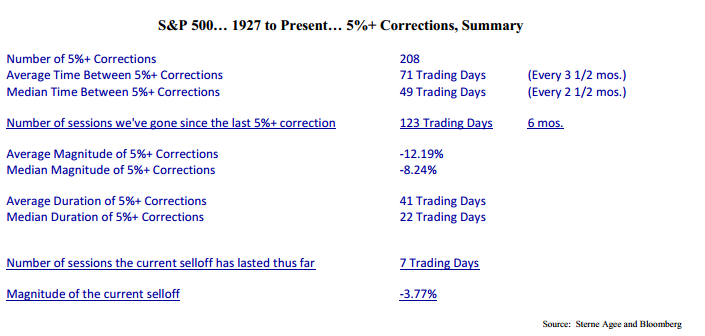Is it time to “buy the dip” again? That’s what some investors are wondering after the recent stock-market slide, even though the S&P 500 isn’t even down 5% from its all-time highs.
It’s a natural question to ask, for several reasons. First, U.S. stocks have been in a low-volatility grind higher the past couple years, and there haven’t been many chances to buy at lower prices.
Also, buying the dip has been rewarding — so far, at least. Some investors may even be feeling invincible.
Financial markets “seem as bulletproof as one of those up-armored military personnel carriers you see in war zones,” ConvergEx Group said in a recent note.
Recent geopolitical tensions in Ukraine and Gaza have yet to trigger a 5% correction in the S&P 500, even with last week’s pullback. And the market didn’t even seem to bat an eye at a European debt flare-up last month in Portugal.
“Why would investors step in, especially with news that would have sent them running just a few years ago? Because every single pullback for over five years has been a buying opportunity in U.S. large cap stocks,” ConvergEx said. “Every. Single. One. Equity markets have trained investors to keep buying, so while the bull market is over five years old, it still thinks it ‘has it.’”
However, investors should be open to the possibilities, especially because it has been so long since we’ve experienced a major correction.
Since 1927, the S&P 500 has averaged a correction of at least 5%, every 71 trading days, or about once every 3.5 months. It has been about six months since the S&P 500 has lost 5%, according to Carter Braxton Worth, chief market technician at Sterne Agee.
Just because we’re “overdue” for a correction, it doesn’t mean one is right around the corner. History never repeats exactly. However, studying market history can help set realistic investor expectations.
For example, since 1900, the Dow Jones Industrial Average has averaged a correction of 20% or more, about once every 3.5 years.
Looking at the S&P 500, it has been about three years since the index has suffered a 10% decline. The current streak is one of the longest in history.
Yet, a correction may actually be a good thing for long-term investors.
“If we’ve got investing time horizons that span more than a decade (and the majority of us do), it is irrational for us to be rooting for new all-time highs,” writes Josh Brown at The Reformed Broker blog. “Real investors don’t get excited by perpetual new highs because they understand that it means lower expected returns on new money invested. They also understand that it makes their jobs harder.”
Legendary fund manager Peter Lynch said corrections are simply a fact of life for long-term investors in the stock market. “Understanding stocks can and will fall is helpful to prepare yourself mentally for how you’ll react once they do,” wrote Ben Carlson at A Wealth of Common Sense blog in a recent post on Lynch.
At some point, volatility will creep back into the markets. But the financial crisis was a reminder that bear markets can offer buying opportunities to investors who are flexible and keep their emotions in check. The key is to have a plan, maintain a long-term mindset, and remember that in financial markets the only thing that’s constant is change.
Continue learning: 3 things to know now that the stock market has tripled
—-
To learn more about investing with the portfolio managers on Covestor, contact our Client Advisers at clientservices@interactiveadvisors.com or 1.866.825.3005. Or you can try Covestor’s services with a free trial account.
DISCLAIMER: The information in this material is not intended to be personalized financial advice and should not be solely relied on for making financial decisions. All investments involve risk, the amount of which may vary significantly. Past performance is no guarantee of future results.







